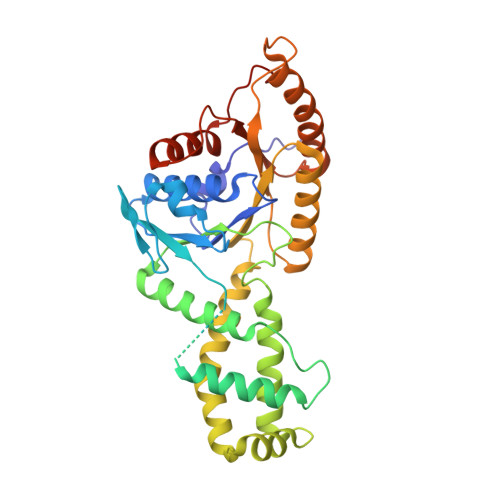Structurally derived universal mechanism for the catalytic cycle of the tail-anchored targeting factor Get3.
Fry, M.Y., Najdrova, V., Maggiolo, A.O., Saladi, S.M., Dolezal, P., Clemons Jr., W.M.(2022) Nat Struct Mol Biol 29: 820-830
- PubMed: 35851188
- DOI: https://doi.org/10.1038/s41594-022-00798-4
- Primary Citation of Related Structures:
7SPY, 7SPZ, 7SQ0 - PubMed Abstract:
Tail-anchored (TA) membrane proteins, accounting for roughly 2% of proteomes, are primarily targeted posttranslationally to the endoplasmic reticulum membrane by the guided entry of TA proteins (GET) pathway. For this complicated process, it remains unknown how the central targeting factor Get3 uses nucleotide to facilitate large conformational changes to recognize then bind clients while also preventing exposure of hydrophobic surfaces. Here, we identify the GET pathway in Giardia intestinalis and present the structure of the Get3-client complex in the critical postnucleotide-hydrolysis state, demonstrating that Get3 reorganizes the client-binding domain (CBD) to accommodate and shield the client transmembrane helix. Four additional structures of GiGet3, spanning the nucleotide-free (apo) open to closed transition and the ATP-bound state, reveal the details of nucleotide stabilization and occluded CBD. This work resolves key conundrums and allows for a complete model of the dramatic conformational landscape of Get3.
- Division of Chemistry and Chemical Engineering, California Institute of Technology, Pasadena, CA, USA.
Organizational Affiliation:




















